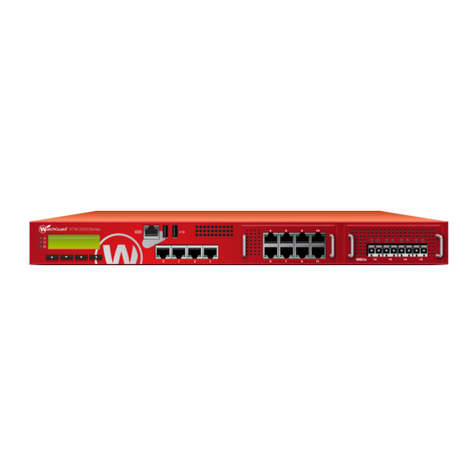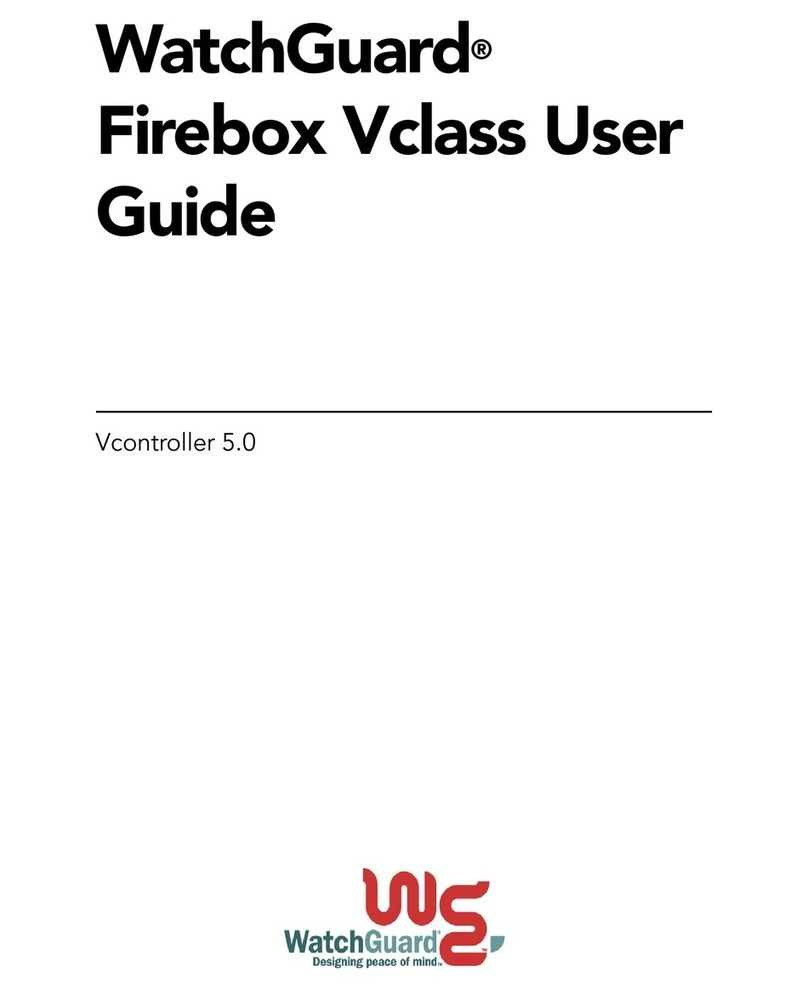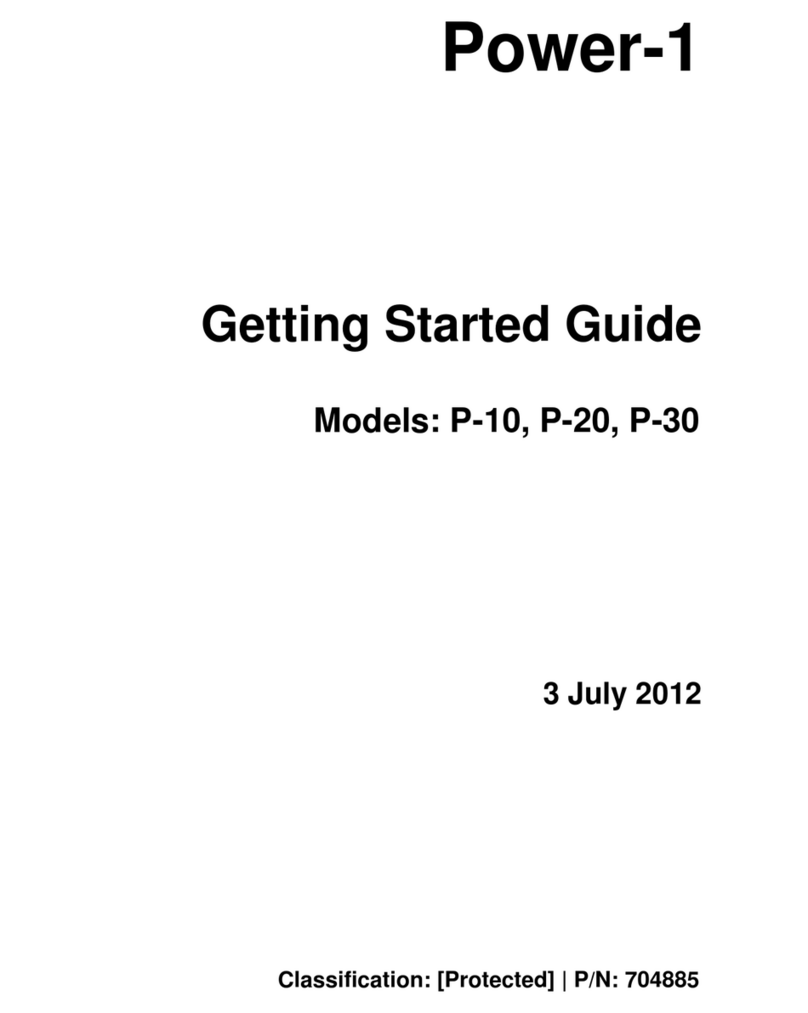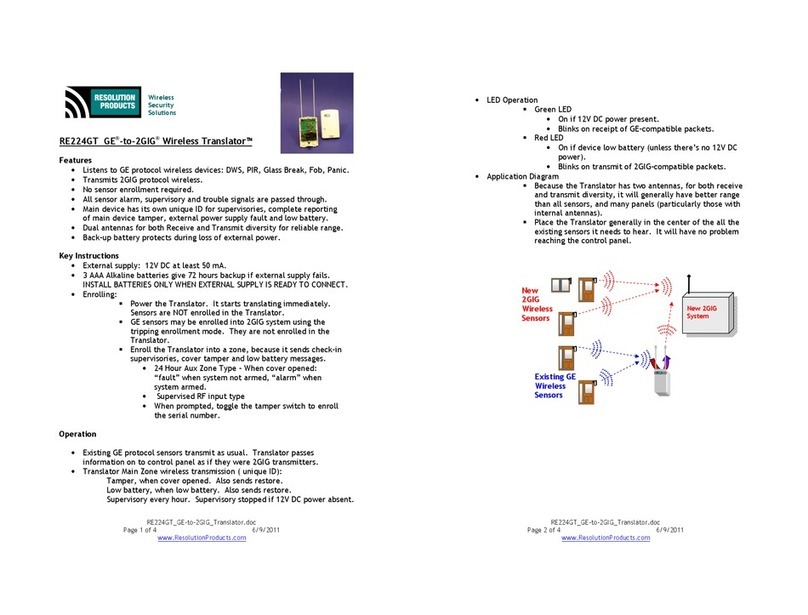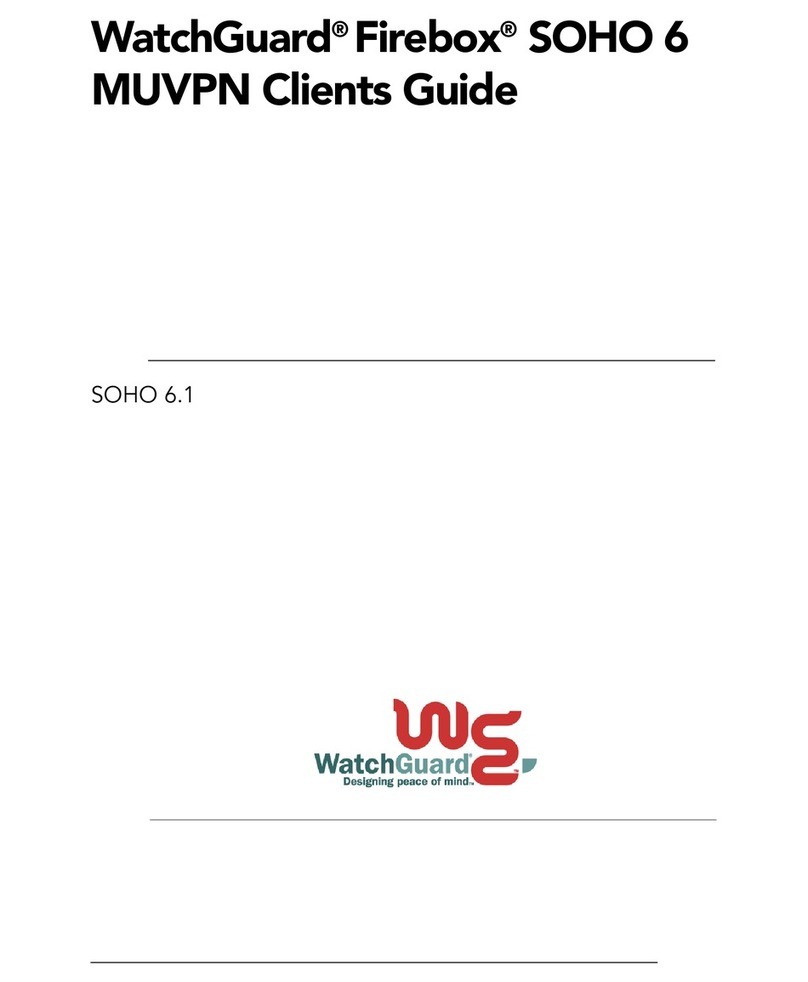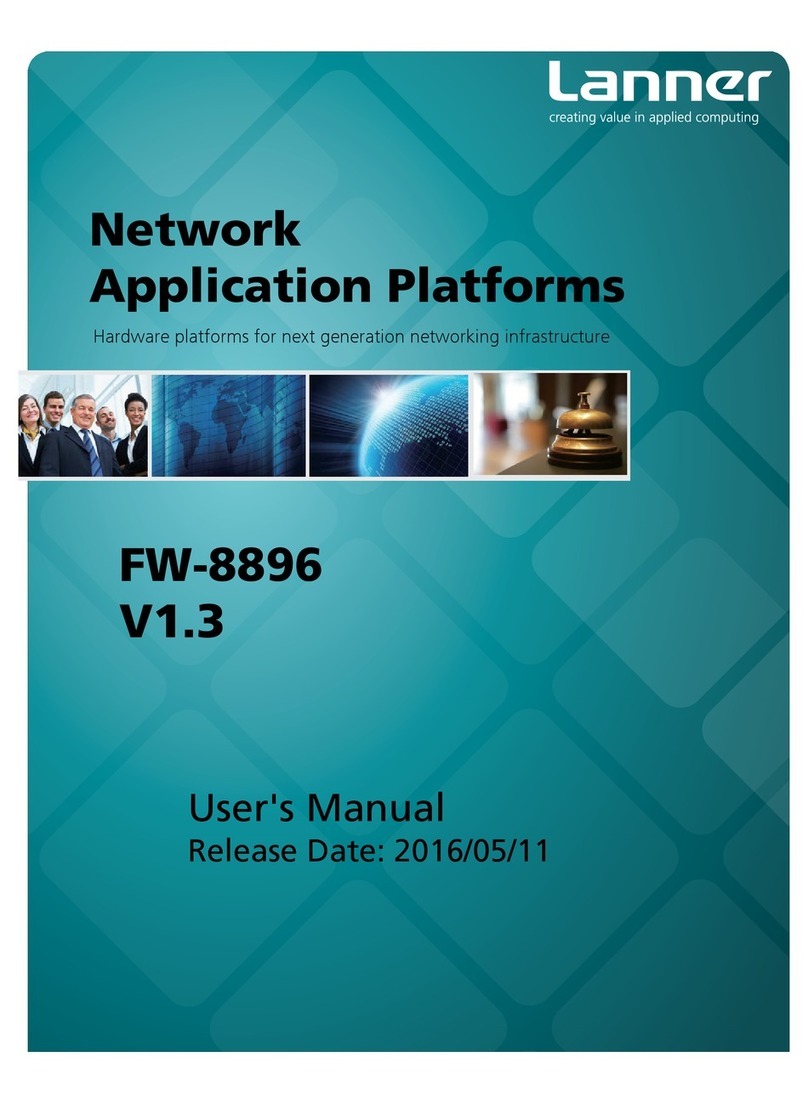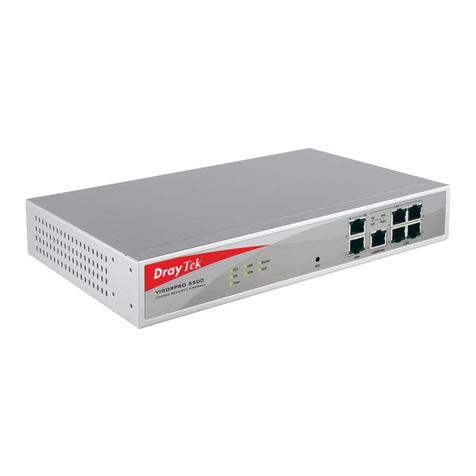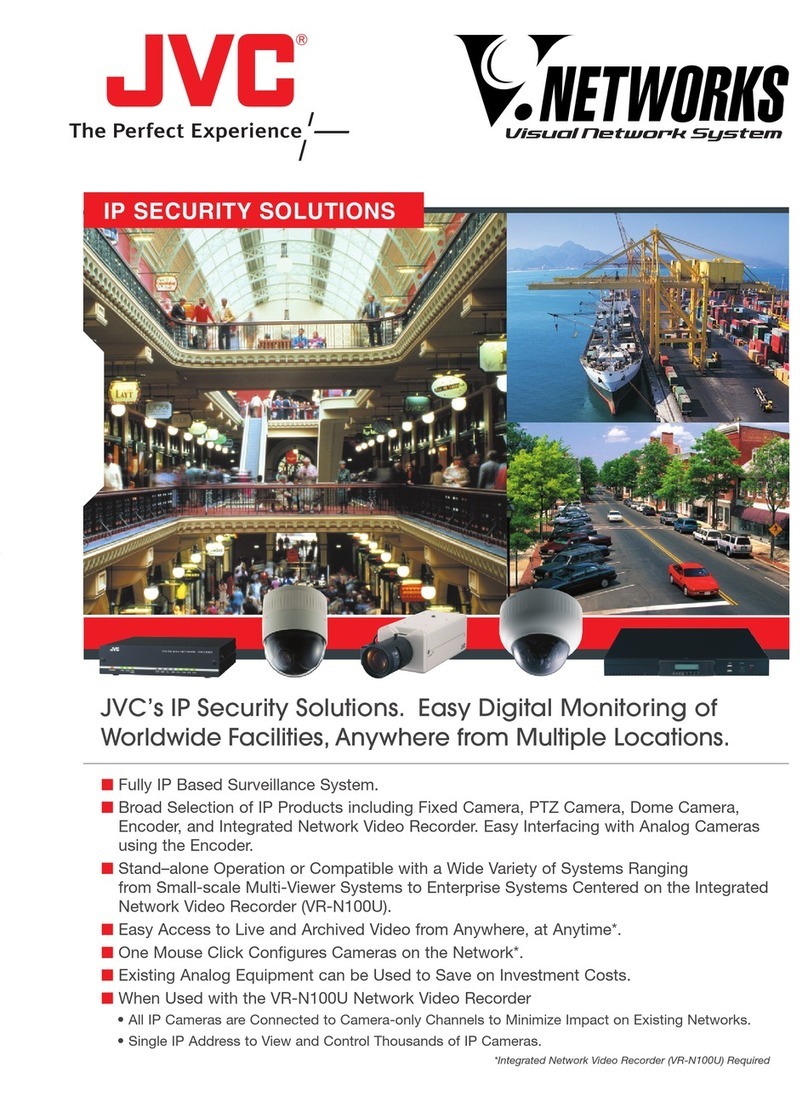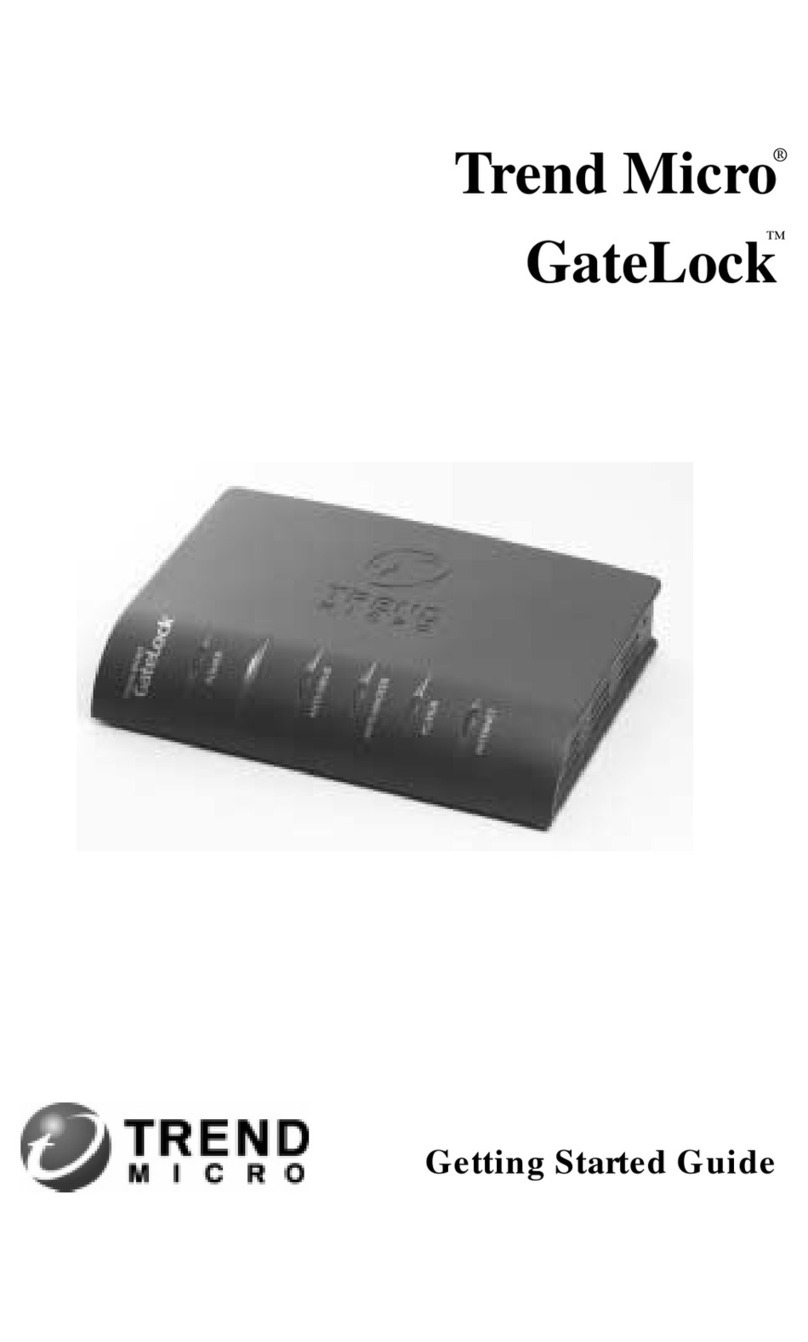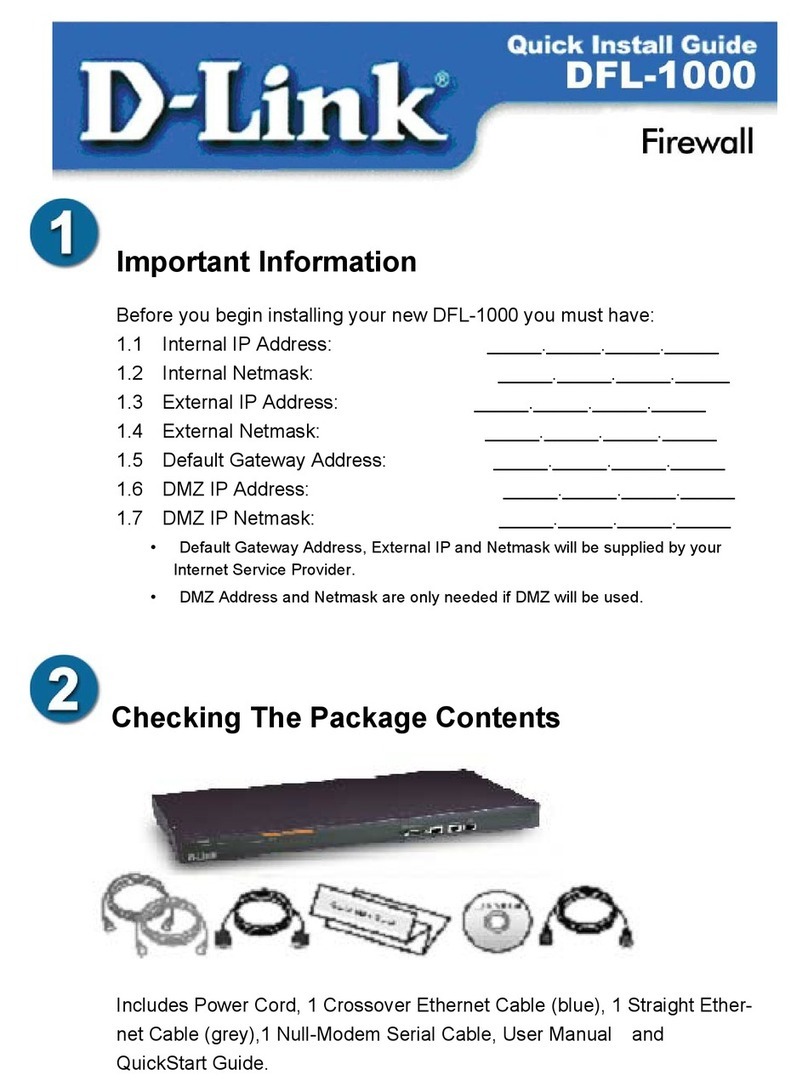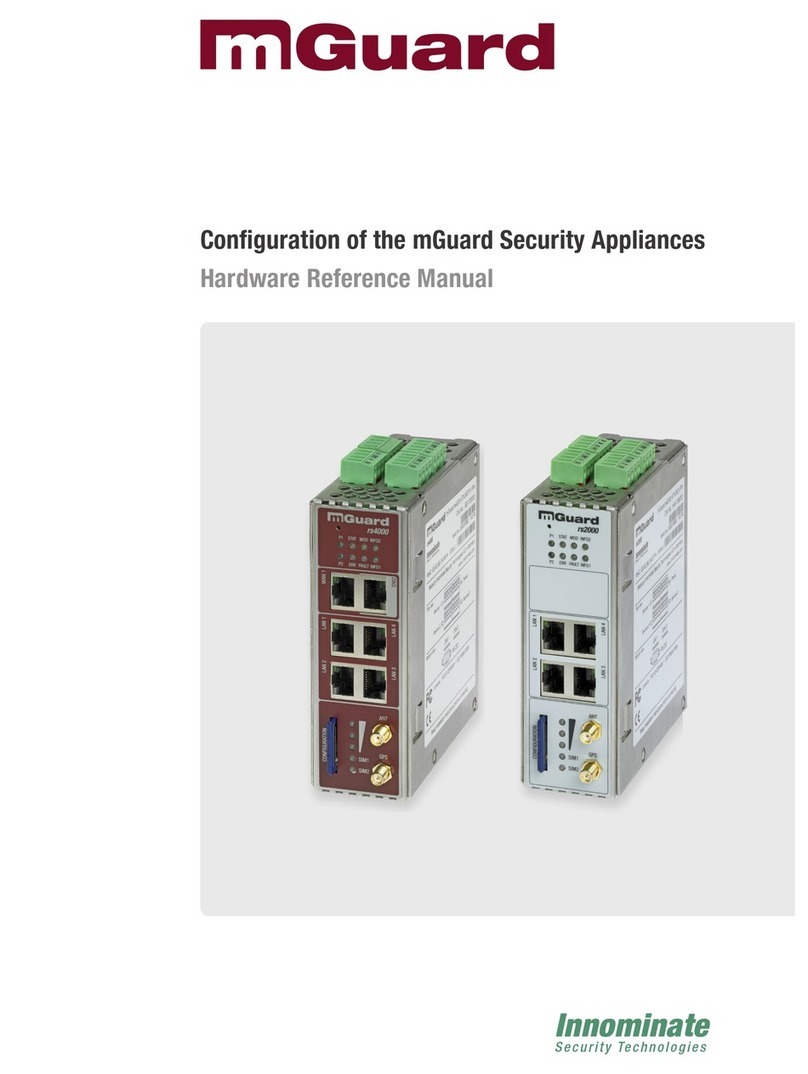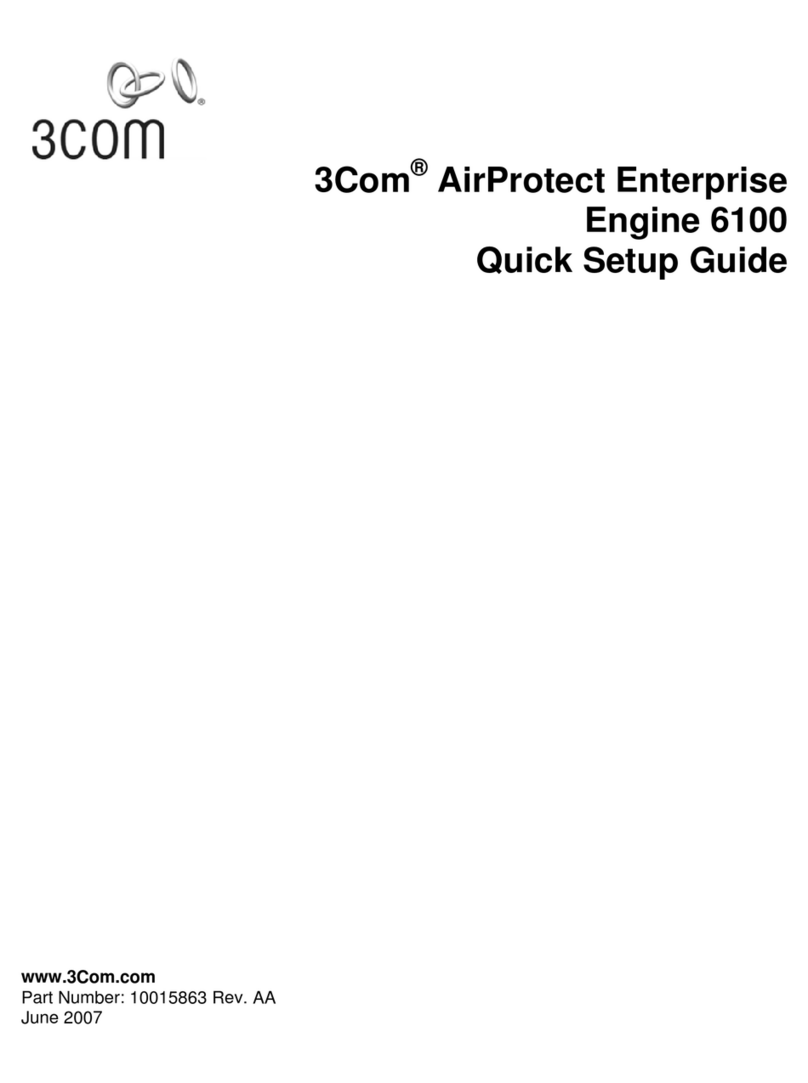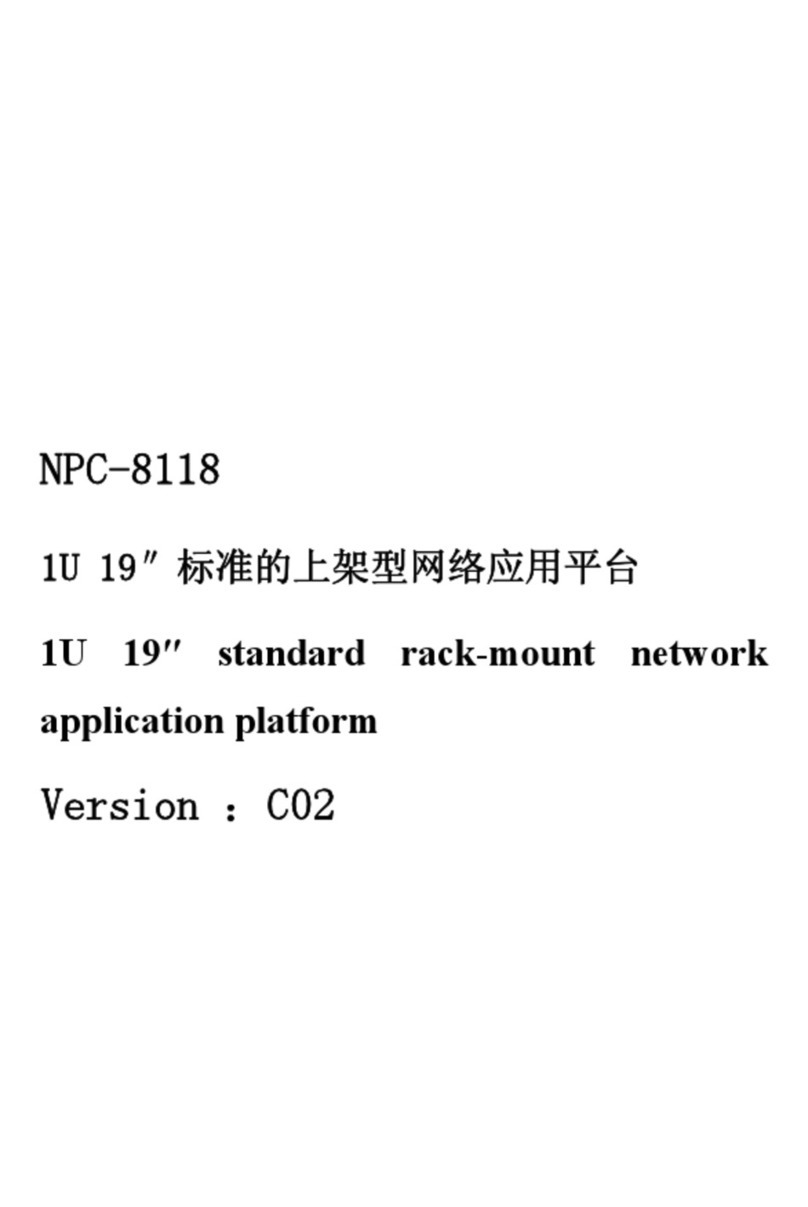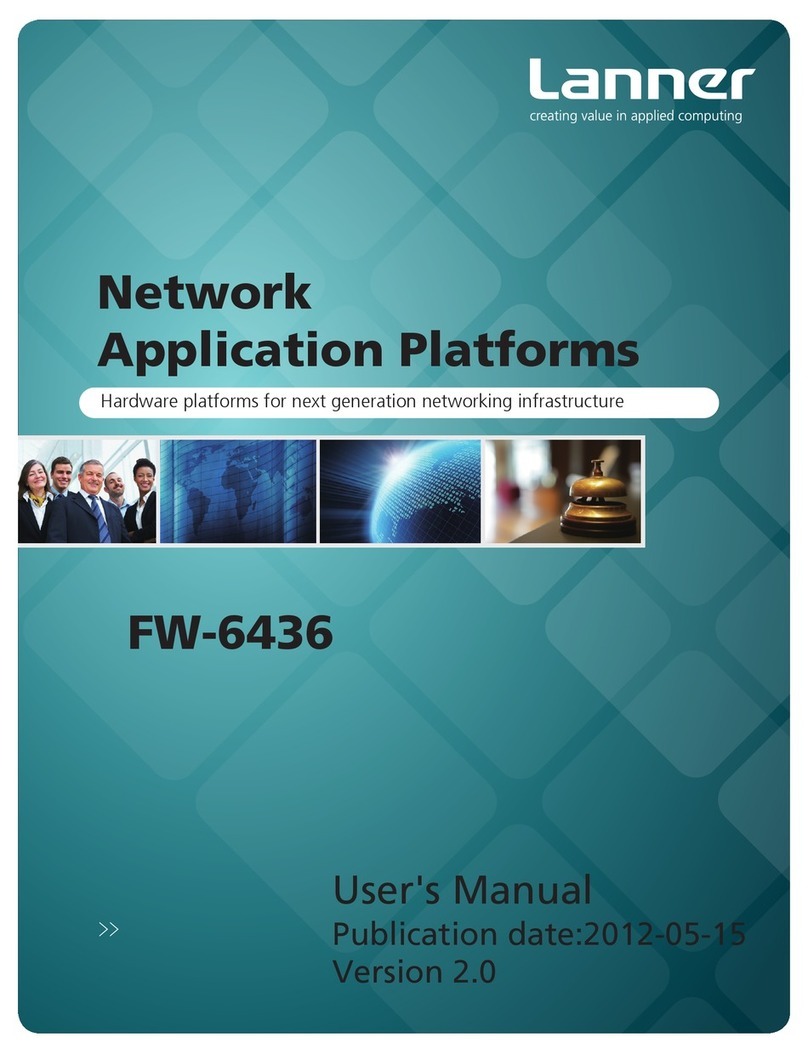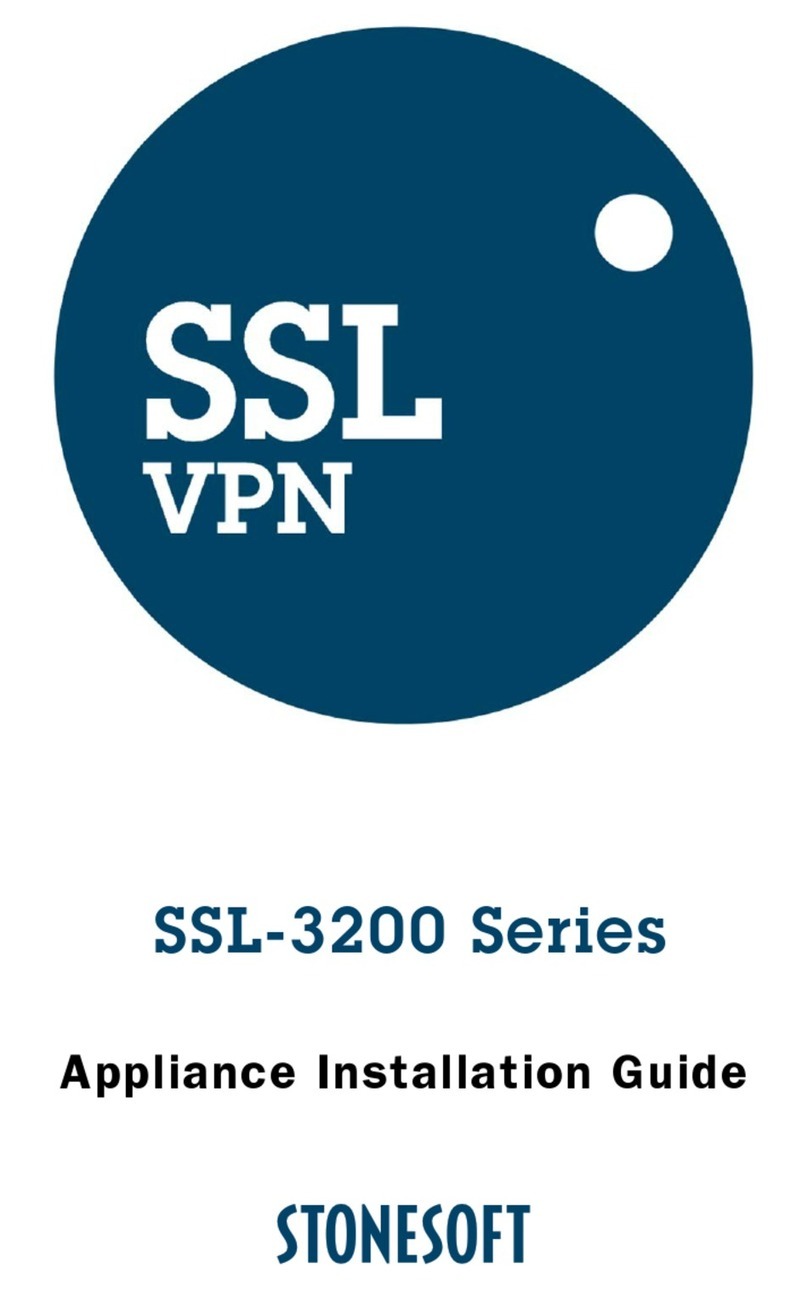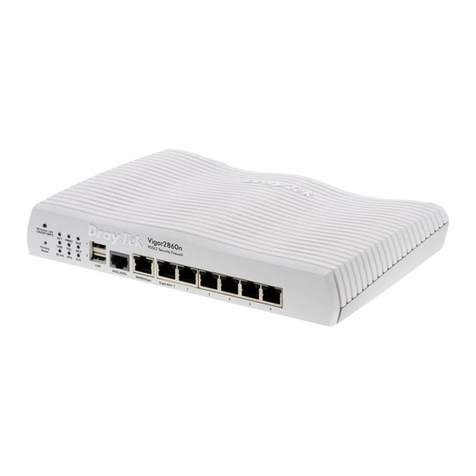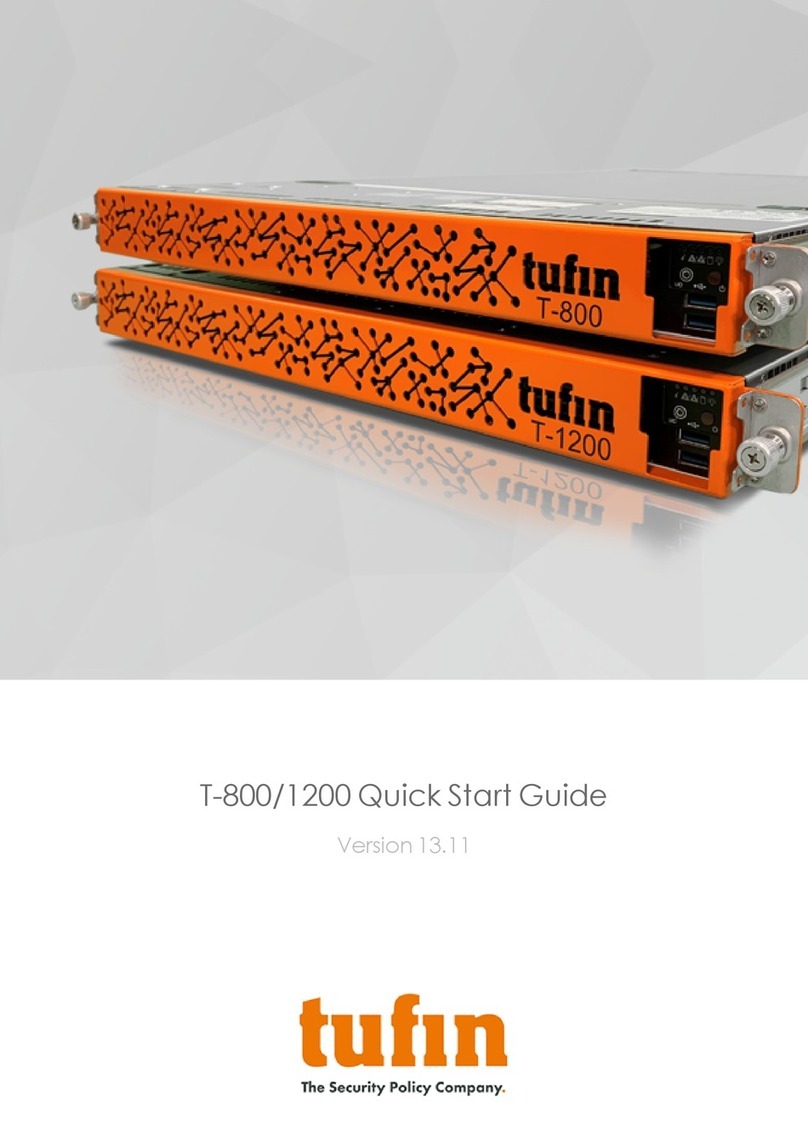Source fire Sourcefire 3D System User manual

Version 5.2 Sourcefire 3D System Installation Guide 1
Sourcefire 3D System
Installation Guide
Version 5.2

Terms of Use Applicable to the User Documentation
The legal notices, disclaimers, terms of use, and other information contained herein (the "terms") apply only to
the information discussed in this documentation (the "Documentation") and your use of it. These terms do not
apply to or govern the use of websites controlled by Sourcefire, Inc. or its subsidiaries (collectively, "Sourcefire")
or any Sourcefire-provided products. Sourcefire products are available for purchase and subject to a separate
license agreement and/or terms of use containing very different terms and conditions.
Terms of Use and Copyright and Trademark Notices
The copyright in the Documentation is owned by Sourcefire and is protected by copyright and other intellectual
property laws of the United States and other countries. You may use, print out, save on a retrieval system, and
otherwise copy and distribute the Documentation solely for non-commercial use, provided that you (i) do not
modify the Documentation in any way and (ii) always include Sourcefire's copyright, trademark, and other
proprietary notices, as well as a link to, or print out of, the full contents of this page and its terms.
No part of the Documentation may be used in a compilation or otherwise incorporated into another work or with
or into any other documentation or user manuals, or be used to create derivative works, without the express
prior written permission of Sourcefire. Sourcefire reserves the right to change the terms at any time, and your
continued use of the Documentation shall be deemed an acceptance of those terms.
Sourcefire, the Sourcefire logo, Snort, the Snort and Pig logo, Immunet, ClamAV and certain other trademarks
and logos are trademarks or registered trademarks of Sourcefire, Inc. in the United States and other countries.
Other company, product and service names may be trademarks or service marks of others.
© 2004 - 2013 Sourcefire, Inc. All rights reserved.
Disclaimers
THE DOCUMENTATION AND ANY INFORMATION AVAILABLE FROM IT MAY INCLUDE INACCURACIES OR
TYPOGRAPHICAL ERRORS. SOURCEFIRE MAY CHANGE THE DOCUMENTATION FROM TIME TO TIME.
SOURCEFIRE MAKES NO REPRESENTATIONS OR WARRANTIES ABOUT THE ACCURACY OR SUITABILITY OF
ANY SOURCEFIRE-CONTROLLED WEBSITE, THE DOCUMENTATION AND/OR ANY PRODUCT INFORMATION.
SOURCEFIRE-CONTROLLED WEBSITES, THE DOCUMENTATION AND ALL PRODUCT INFORMATION ARE
PROVIDED "AS IS" AND SOURCEFIRE DISCLAIMS ANY AND ALL EXPRESS AND IMPLIED WARRANTIES,
INCLUDING BUT NOT LIMITED TO WARRANTIES OF TITLE AND THE IMPLIED WARRANTIES OF
MERCHANTABILITY AND/OR FITNESS FOR A PARTICULAR PURPOSE. IN NO EVENT SHALL SOURCEFIRE BE
LIABLE TO YOU FOR ANY DIRECT, INDIRECT, INCIDENTAL, SPECIAL, EXEMPLARY, PUNITIVE, OR
CONSEQUENTIAL DAMAGES (INCLUDING BUT NOT LIMITED TO PROCUREMENT OF SUBSTITUTE GOODS OR
SERVICES, LOSS OF DATA, LOSS OF PROFITS, AND/OR BUSINESS INTERRUPTIONS), ARISING OUT OF OR IN
ANY WAY RELATED TO SOURCEFIRE-CONTROLLED WEBSITES OR THE DOCUMENTATION, NO MATTER HOW
CAUSED AND/OR WHETHER BASED ON CONTRACT, STRICT LIABILITY, NEGLIGENCE OR OTHER TORTUOUS
ACTIVITY, OR ANY OTHER THEORY OF LIABILITY, EVEN IF SOURCEFIRE IS ADVISED OF THE POSSIBILITY OF
SUCH DAMAGES. BECAUSE SOME STATES/JURISDICTIONS DO NOT ALLOW THE EXCLUSION OR LIMITATION
OF LIABILITY FOR CONSEQUENTIAL OR INCIDENTAL DAMAGES, THE ABOVE LIMITATIONS MAY NOT APPLY TO
YOU.
The Documentation may contain "links" to websites that are not created by, or under the control of Sourcefire.
Sourcefire provides such links solely for your convenience, and assumes no responsibility for the availability or
content of such other sites.
2013-Oct-18 16:20

Version 5.2 Sourcefire 3D System Installation Guide 3
Table of Contents
Chapter 1: Introduction to the Sourcefire 3D System ............................... 8
Sourcefire 3D System Appliances ........................................................................ 9
Defense Centers...................................................................................... 9
Managed Devices .................................................................................. 10
Understanding Appliance Series, Models, and Capabilities................... 10
Sourcefire 3D System Components ................................................................... 16
Licensing the Sourcefire 3D System .................................................................. 19
Using Legacy RNA Host and RUA User Licenses ................................. 22
Security, Internet Access, and Communication Ports......................................... 23
Internet Access Requirements .............................................................. 23
Open Communication Ports Requirements ........................................... 24
Chapter 2: Understanding Deployment ..................................................... 27
Understanding Deployment Options .................................................................. 28
Understanding Interfaces ................................................................................... 28
Passive Interfaces.................................................................................. 29
Inline Interfaces ..................................................................................... 29
Switched Interfaces ............................................................................... 30
Routed Interfaces .................................................................................. 31
Hybrid Interfaces ................................................................................... 32

Version 5.2 Sourcefire 3D System Installation Guide 4
Table of Contents
Connecting Devices to Your Network ................................................................. 32
Using a Hub ........................................................................................... 33
Using a Span Port .................................................................................. 33
Using a Network Tap.............................................................................. 33
Cabling Inline Deployments on Copper Interfaces................................. 34
Special Cases......................................................................................... 36
Deployment Options........................................................................................... 36
Deploying with a Virtual Switch.............................................................. 37
Deploying with a Virtual Router ............................................................. 38
Deploying with Hybrid Interfaces........................................................... 40
Deploying a Gateway VPN ..................................................................... 41
Deploying with Policy-Based NAT .......................................................... 42
Deploying with Access Control.............................................................. 43
Using a Multi-Port Managed Device ................................................................... 48
Complex Network Deployments ........................................................................ 50
Integrating with VPNs............................................................................ 51
Detecting Intrusions on Other Points of Entry....................................... 51
Deploying in Multi-Site Environments.................................................... 53
Integrating Managed Devices within Complex Networks ..................... 55
Chapter 3: Installing a Sourcefire 3D System Appliance ....................... 57
Included Items .................................................................................................... 58
Security Considerations ...................................................................................... 58
Identifying the Management Interfaces ............................................................. 58
Sourcefire Defense Center 750 ............................................................. 59
Sourcefire Defense Center 1500 ........................................................... 59
Sourcefire Defense Center 3500 ........................................................... 60
Sourcefire 3D500/1000/2000................................................................. 60
Sourcefire 7000 Series .......................................................................... 60
Sourcefire 8000 Series .......................................................................... 61
Identifying the Sensing Interfaces ...................................................................... 61
Sourcefire 3D500/1000/2000................................................................. 62
Sourcefire 7000 Series .......................................................................... 63
Sourcefire 8000 Series .......................................................................... 67
Using Devices in a Stacked Configuration .......................................................... 74
Connecting the 3D8140 ......................................................................... 75
Connecting the 3D8250/8260/8270/8290.............................................. 75
Using the 8000 Series Stacking Cable................................................... 79
Managing Stacked Devices.................................................................... 79
Installing the Appliance in a Rack ....................................................................... 80
Redirecting Console Output ............................................................................... 82
Testing an Inline Bypass Interface Installation .................................................... 83

Version 5.2 Sourcefire 3D System Installation Guide 5
Table of Contents
Chapter 4: Setting Up a Sourcefire 3D System Appliance ..................... 86
Understanding the Setup Process ...................................................................... 87
Setting Up a Series 2 Appliance or Series 3 Defense Center ................ 88
Setting Up a Series 3 Device ................................................................. 89
Configuring Network Settings Using a Script ..................................................... 90
Performing Initial Setup on a Series 3 Device Using the CLI .............................. 91
Registering a Series 3 Device to a Defense Center Using the CLI........ 92
Initial Setup Page: Devices ................................................................................. 93
Initial Setup Page: Defense Centers ................................................................. 100
Next Steps ........................................................................................................ 109
Chapter 5: Using the LCD Panel on a Series 3 Device .......................... 111
Understanding LCD Panel Components ........................................................... 112
Using the LCD Multi-Function Keys.................................................................. 113
Idle Display Mode ............................................................................................. 114
Network Configuration Mode ........................................................................... 115
Allowing Network Reconfiguration Using the LCD Panel ..................... 117
System Status Mode ........................................................................................ 118
Information Mode ............................................................................................. 119
Error Alert Mode ............................................................................................... 121
Chapter 6: Hardware Specifications........................................................ 122
Rack and Cabinet Mounting Options ................................................................ 122
Sourcefire Defense Centers ............................................................................. 123
Sourcefire DC750 ................................................................................ 123
Sourcefire DC1500 .............................................................................. 129
Sourcefire DC3500 .............................................................................. 135
Sourcefire Series 2 Devices.............................................................................. 142
Sourcefire 3D500, 3D1000 and 3D2000 Devices ................................ 142
3D500/1000/2000 Physical and Environmental Parameters ................ 145
Sourcefire 7000 Series Devices ....................................................................... 146
Sourcefire 3D7010, 3D7020, and 3D7030 ........................................... 146
Sourcefire 3D7110 and 3D7120 ........................................................... 153
Sourcefire 3D7115 and 3D7125 ........................................................... 162
Sourcefire 8000 Series Devices ....................................................................... 172
8000 Series Chassis Front View .......................................................... 173
8000 Series Chassis Rear View ........................................................... 178
8000 Series Physical and Environmental Parameters.......................... 181
8000 Series Modules........................................................................... 185

Version 5.2 Sourcefire 3D System Installation Guide 6
Table of Contents
Chapter 7: Restoring a Sourcefire Appliance to Factory Defaults...... 198
Before You Begin .............................................................................................. 198
Configuration and Event Backup Guidelines ........................................ 199
Traffic Flow During the Restore Process.............................................. 199
Understanding the Restore Process................................................................. 199
Obtaining the Restore ISO and Update Files.................................................... 201
Beginning the Restore Process ........................................................................ 203
Starting the Restore Utility Using KVM or Physical Serial.................... 203
Starting the Restore Utility Using Lights-Out Management ................ 205
Using the Interactive Menu to Restore an Appliance ....................................... 207
Identifying the Appliance’s Management Interface ............................. 209
Specifying ISO Image Location and Transport Method ....................... 210
Updating System Software and Intrusion Rules During Restore ......... 211
Downloading the ISO and Update Files and Mounting the Image ...... 212
Invoking the Restore Process .............................................................. 213
Saving and Loading Restore Configurations ........................................ 215
Restoring a DC1000 or DC3000 Using a CD .................................................... 217
Next Steps ........................................................................................................ 218
Scrubbing the Contents of the Hard Drive........................................................ 219
Setting up Lights-Out Management ................................................................. 219
Enabling LOM and LOM Users............................................................ 221
Installing an IPMI Utility....................................................................... 222
Chapter 8: Safety and Regulatory Information....................................... 224
General Safety Guidelines ................................................................................ 224
Safety Warning Statements.............................................................................. 226
Regulatory Information ..................................................................................... 229
Sourcefire Defense Center 750/1500/3500 Information ...................... 229
Sourcefire 3D500 Information ............................................................. 230
Sourcefire Series 3 Information ........................................................... 232
Waste Electrical and Electronic Equipment Directive (WEEE).......................... 238
Appendix A: Power Requirements for Sourcefire Devices ..................... 240
Warnings and Cautions..................................................................................... 240
Interface Connections.......................................................................... 240
Static Control ....................................................................................... 241
3D7010/7020/7030............................................................................................ 241
Installation............................................................................................ 241
Grounding/Earthing Requirements ...................................................... 242

Version 5.2 Sourcefire 3D System Installation Guide 7
Table of Contents
3D7110/7120 and 3D7115/7125 ........................................................................ 243
Installation............................................................................................ 243
Grounding/Earthing Requirements ...................................................... 244
3D8120/8130/8140 and 3D8250/8260/8270/8290 ............................................ 245
AC Installation...................................................................................... 245
DC Installation...................................................................................... 247
Grounding/Earthing Requirements ...................................................... 249
Appendix B: Using SFP Transceivers on a 3D7115 or 3D7125................. 251
3D7115 and 3D7125 SFP Sockets and Transceivers ......................................... 251
Inserting an SFP Transceiver............................................................................. 253
Removing an SFP Transceiver........................................................................... 254
Appendix C: Inserting and Removing 8000 Series Modules.................... 255
Module Slots on the 8000 Series Appliances................................................... 255
81xx Family.......................................................................................... 256
82xx Family.......................................................................................... 256
Included Items .................................................................................................. 257
Identifying the Module Parts ............................................................................ 258
Before You Begin .............................................................................................. 259
Removing a Module or Slot Cover .................................................................... 259
Inserting a Module or Slot Cover ...................................................................... 260
Glossary .....................................................................................................................264

Version 5.2 Sourcefire 3D System Installation Guide 8
CHAPTER 1
INTRODUCTION TO THE SOURCEFIRE 3D
SYSTEM
The Sourcefire 3D® System combines the security of an industry-leading
network intrusion protection system with the power to control access to your
network based on detected applications, users, and URLs. You can also use
Sourcefire appliances to serve in a switched, routed, or hybrid (switched and
routed) environment; to perform network address translation (NAT); and to build
secure virtual private network (VPN) tunnels among the virtual routers on
Sourcefire managed devices, or from managed devices to remote devices or
other third-party VPN endpoints.
The Sourcefire Defense Center® provides a centralized management console and
database repository for the Sourcefire 3D System. Managed devices installed on
network segments monitor traffic for analysis.
Devices in a passive deployment monitor traffic flowing across a network, for
example, using a switch SPAN, virtual switch, or mirror port. Passive sensing
interfaces receive all traffic unconditionally and no traffic received on these
interfaces is retransmitted.
Devices in an inline deployment allow you to protect your network from attacks
that might affect the availability, integrity, or confidentiality of hosts on the
network. Inline interfaces receive all traffic unconditionally, and traffic received on
these interfaces is retransmitted unless explicitly dropped by some configuration
in your deployment. Inline devices can be deployed as a simple intrusion
prevention system. You can also configure inline devices to perform access
control as well as manage network traffic in other ways.
This installation guide provides information about deploying, installing, and setting
up Sourcefire appliances (devices and Defense Centers). It also contains

Version 5.2 Sourcefire 3D System Installation Guide 9
Introduction to the Sourcefire 3D System
Sourcefire 3D System Appliances Chapter 1
hardware specifications and safety and regulatory information for Sourcefire
appliances.
TIP! You can host virtual Defense Centers and devices, which can manage and
be managed by physical appliances. However, virtual appliances do not support
any of the system’s hardware-based features: redundancy, switching, routing, and
so on. For detailed information, see the Sourcefire 3D System Virtual Installation
Guide.
The topics that follow introduce you to the Sourcefire 3D System and describe its
key components:
•Sourcefire 3D System Appliances on page 9
•Sourcefire 3D System Components on page 16
•Licensing the Sourcefire 3D System on page 19
•Security, Internet Access, and Communication Ports on page 23
Sourcefire 3D System Appliances
A Sourcefire appliance is either a traffic-sensing managed device or a managing
Defense Center:
Physical devices are fault-tolerant, purpose-built network appliances available with
a range of throughputs and capabilities. Defense Centers serve as central
management points for these devices, and automatically aggregate and correlate
the events they generate. There are several models of each physical appliance
type; these models are further grouped into series and family.
Many Sourcefire 3D System capabilities are appliance dependent. For more
information, see the following sections:
•Defense Centers on page 9
•Managed Devices on page 10
•Understanding Appliance Series, Models, and Capabilities on page 10
Defense Centers
The Defense Center provides a centralized management point and event
database for your Sourcefire 3D System deployment. Defense Centers, which
can be physical or virtual, aggregate and correlate intrusion, file, malware,
discovery, connection, and performance data. This allows you to monitor the
information that your devices report in relation to one another, and to assess and
control the overall activity that occurs on your network.

Version 5.2 Sourcefire 3D System Installation Guide 10
Introduction to the Sourcefire 3D System
Sourcefire 3D System Appliances Chapter 1
Key features of the Defense Center include:
•device, license, and policy management
•display of event and contextual information using tables, graphs, and charts
•health and performance monitoring
•external notification and alerting
•real-time threat response using correlation and remediation features
•reporting
For many physical Defense Centers, a high availability (redundancy) feature can
help you ensure continuity of operations.
Managed Devices
Physical Sourcefire devices are fault-tolerant, purpose-built network appliances
available in a range of throughputs. You can also host virtual devices. Devices
deployed passively help you gain insight into your network traffic. Deployed inline,
you can use Sourcefire devices to affect the flow of traffic based on multiple
criteria. You must manage Sourcefire devices with a Defense Center.
Depending on model and license, managed devices:
•gather detailed information about your organization’s hosts, operating
systems, applications, users, files, networks, and vulnerabilities
•block or allow network traffic based on various network-based criteria, as
well as other criteria including applications, users, URLs, IP address
reputations, and the results of intrusion or malware inspections
•have switching, routing, DHCP, NAT, and VPN capabilities, as well as
configurable bypass interfaces, fast-path rules, and strict TCP enforcement
•have clustering (redundancy) to help you ensure continuity of operations,
and stacking to combine resources from multiple devices
Understanding Appliance Series, Models, and Capabilities
Version 5.2 of the Sourcefire 3D System is available on two series of physical
appliances, as well as virtual appliances. Many Sourcefire 3D System capabilities
are appliance dependent. For more information, see:
•Series 2 Appliances on page 11
•Series 3 Appliances on page 11
•Virtual Appliances on page 12
•Appliances Delivered with Version 5.2 on page 12
•Supported Capabilities by Appliance Model on page 13

Version 5.2 Sourcefire 3D System Installation Guide 11
Introduction to the Sourcefire 3D System
Sourcefire 3D System Appliances Chapter 1
Series 2 Appliances
Series 2 is the second series of Sourcefire physical appliances. Because of
resource and architecture limitations, Series 2 devices support a restricted set of
Sourcefire 3D System features.
Although Sourcefire does not deliver Version 5.2 on Series 2 appliances other
than 3D500/1000/2000 devices, you can restore the following Series 2 devices
and Defense Centers to Version 5.2:
•3D2100/2500/3500/4500
•3D6500
•3D9900
•DC500/1000/3000
There is no update path from Version 4.10.x to Version 5.2; you must use an ISO
image to restore your appliances. Reimaging results in the loss of all
configuration and event data on the appliance. You cannot import this data onto
an appliance after a reimage. For more information, see Restoring a Sourcefire
Appliance to Factory Defaults on page 198.
IMPORTANT! Only reimage your appliances during a maintenance window.
Reimaging resets devices in inline deployments to a non-bypass configuration
and disrupts traffic on your network. For more information, see Traffic Flow During
the Restore Process on page 199.
When running Version 5.2, Series 2 devices automatically have most of the
capabilities associated with a Protection license: intrusion detection and
prevention, file control, and basic access control. However, Series 2 devices
cannot perform Security Intelligence filtering, advanced access control, or
advanced malware protection. You also cannot enable other licensed capabilities
on a Series 2 device. With the exception of the 3D9900, which supports fast-path
rules, stacking, and tap mode, Series 2 devices do not support any of the
hardware-based features associated with Series 3 devices: switching, routing,
NAT, and so on.
When running Version 5.2, DC1000 and DC3000 Series 2 Defense Centers
support all the features of the Sourcefire 3D System; the DC500 has more limited
capabilities.
Series 3 Appliances
Series 3 is the third series of Sourcefire physical appliances. All 7000 Series and
8000 Series devices are Series 3 appliances. 8000 Series devices are more
powerful and support a few features that 7000 Series devices do not.

Version 5.2 Sourcefire 3D System Installation Guide 12
Introduction to the Sourcefire 3D System
Sourcefire 3D System Appliances Chapter 1
Virtual Appliances
You can host 64-bit virtual Defense Centers and devices on VMware ESX/ESXi.
Virtual Defense Centers can manage up to 25 physical or virtual devices; physical
Defense Centers can manage virtual devices.
Regardless of the licenses installed and applied, virtual appliances do not support
any of the system’s hardware-based features: redundancy, switching, routing, and
so on. Also, virtual devices do not have web interfaces. For detailed information
on virtual appliances, see the Sourcefire 3D System Virtual Installation Guide.
Appliances Delivered with Version 5.2
The following table lists the appliances that Sourcefire delivers with Version 5.2 of
the Sourcefire 3D System.
Although Sourcefire does not deliver Version 5.2 on Series 2 appliances other
than 3D500, 3D1000m and 3D2000 devices, you can reimage the following
Series 2 devices and Defense Centers to Version 5.2:
•3D2100/2500/3500/4500
•3D6500
Version 5.2 Sourcefire Appliances
MODELS/FAMILY SERIES TYPE
Series 2 devices:
3D500, 3D1000, and 3D2000
Series 2 device
70xx Family:
3D7010, 3D7020 and 3D7030
Series 3 (7000 Series) device
71xx Family:
3D7110, 3D7115, 3D7120m
and 3D7125
Series 3 (7000 Series) device
81xx Family:
3D8120/8130/8140
Series 3 (8000 Series) device
82xx Family:
3D8250, 3D8260, 3D8270,
and 3D8290
Series 3 (8000 Series) device
virtual devices none device
Series 3 Defense Centers:
DC750/1500/3500
Series 3 Defense Center
virtual Defense Centers none Defense Center

Version 5.2 Sourcefire 3D System Installation Guide 13
Introduction to the Sourcefire 3D System
Sourcefire 3D System Appliances Chapter 1
•3D9900
•DC500/1000/3000
Reimaging results in the loss of all configuration and event data on the appliance.
See Restoring a Sourcefire Appliance to Factory Defaults on page 198 for more
information.
Supported Capabilities by Appliance Model
Many Sourcefire 3D System capabilities are appliance dependent. The table
below matches the major capabilities of the system with the appliances that
support those capabilities, assuming you have the correct licenses installed and
applied. For a brief summary of these features and licenses, see Supported
Capabilities by Appliance Model on page 13 and Licensing the Sourcefire 3D
System on page 19.
The Defense Center column for device-based capabilities (such as stacking,
switching, and routing) indicates whether that Defense Center can manage and
configure devices to perform their functions. For example, you can use a Series 2
DC1000 to manage NAT on Series 3 devices. Also, a blank cell means the feature
is unsupported, while n/a marks certain Defense Center-based features that are
not relevant to managed devices.
Supported Capabilities by Appliance Model
FEATURE SERIES 2
DEVICE
SERIES 2
DEFENSE
CENTER
SERIES 3
DEVICE
SERIES 3
DEFENSE
CENTER
VIRTUAL
DEVICE
VIRTUAL
DEFENSE
CENTER
network discovery:
host, application, and
user
geolocation data DC1000,
DC3000
intrusion detection
and prevention (IPS)
Security Intelligence
filtering
DC1000,
DC3000
access control: basic
network control
access control:
applications
access control: users DC1000,
DC3000

Version 5.2 Sourcefire 3D System Installation Guide 14
Introduction to the Sourcefire 3D System
Sourcefire 3D System Appliances Chapter 1
access control: literal
URLs
access control: URL
filtering by category
and reputation
DC1000,
DC3000
file control: by file
type
network-based
advanced malware
protection (AMP)
DC1000,
DC3000
FireAMP integration n/a n/a n/a
fast-path rules 3D9900 8000 Series
strict TCP
enforcement
configurable bypass
interfaces
except
where
hardware
limited
tap mode 3D9900
switching and
routing
NAT policies
VPN
high availability n/a DC1000,
DC3000
n/a DC1500,
DC3500
n/a
device stacking 3D9900 3D8140,
82xx Family
Supported Capabilities by Appliance Model (Continued)
FEATURE SERIES 2
DEVICE
SERIES 2
DEFENSE
CENTER
SERIES 3
DEVICE
SERIES 3
DEFENSE
CENTER
VIRTUAL
DEVICE
VIRTUAL
DEFENSE
CENTER

Version 5.2 Sourcefire 3D System Installation Guide 15
Introduction to the Sourcefire 3D System
Sourcefire 3D System Appliances Chapter 1
Series 3 Device Chassis Designations
The following section lists the 7000 Series and 8000 Series devices and their
respective chassis hardware codes. The chassis code appears on the regulatory
label on the outside of the chassis, and is the official reference code for hardware
certifications and safety.
7000 Series Chassis Designations
The 7000 Series Chassis Models table lists the chassis designations for the
7000 Series models available world-wide.
device clustering
clustered stacks 3D8140,
82xx Family
interactive CLI
Supported Capabilities by Appliance Model (Continued)
FEATURE SERIES 2
DEVICE
SERIES 2
DEFENSE
CENTER
SERIES 3
DEVICE
SERIES 3
DEFENSE
CENTER
VIRTUAL
DEVICE
VIRTUAL
DEFENSE
CENTER
7000 Series Chassis Models
3D DEVICE MODEL HARDWARE CHASSIS CODE
3D7010, 3D7020, and 3D7030 CHRY-1U-AC
3D7110 and 3D7120 (Copper) GERY-1U-8-C-AC
3D7110 and 3D7120 (Fiber) GERY-1U-8-FM-AC
3D7115 and 3D7125 GERY-1U-4C8S-AC

Version 5.2 Sourcefire 3D System Installation Guide 16
Introduction to the Sourcefire 3D System
Sourcefire 3D System Components Chapter 1
8000 Series Chassis Designations
The 8000 Series Chassis Models table lists the chassis designations for the
Series 3 models available world-wide.
Sourcefire 3D System Components
The sections that follow describe some of the key capabilities of the Sourcefire
3D System that contribute to your organization’s security, acceptable use policy,
and traffic management strategy.
TIP! Many Sourcefire 3D System capabilities are appliance model, license, and
user role dependent. Where needed, Sourcefire documentation outlines the
requirements for each feature and task.
Redundancy and Resource Sharing
The redundancy and resource-sharing features of the Sourcefire 3D System allow
you to ensure continuity of operations and to combine the processing resources
of multiple physical devices:
•Defense Center high availability allows you to designate redundant DC1000,
DC1500, DC3000, or DC3500 Defense Centers to manage devices.
•Device stacking allows you to increase the amount of traffic inspected on a
network segment by connecting two to four physical devices in a stacked
configuration.
•Device clustering allows you to establish redundancy of networking
functionality and configuration data between two or more Series 3 devices
or stacks.
8000 Series Chassis Models
3D DEVICE MODEL HARDWARE CHASSIS CODE
3D8120, 3D8130, and 3D8140
(AC power)
CHAS-1U-AC
3D8120, 3D8130, and 3D8140
(DC power)
CHAS-1U-DC
3D8250, 3D8260, 3D8270, and 3D8290
(AC power)
CHAS-2U-AC
3D8250, 3D8260, 3D8270, and 3D8290
(DC power)
CHAS-2U-DC

Version 5.2 Sourcefire 3D System Installation Guide 17
Introduction to the Sourcefire 3D System
Sourcefire 3D System Components Chapter 1
Network Traffic Management
The Sourcefire 3D System’s network traffic management features allow Series 3
devices to act as part of your organization’s network infrastructure. You can:
•configure a Layer 2 deployment to perform packet switching between two
or more network segments
•configure a Layer 3 deployment to route traffic between two or more
interfaces
•perform network address translation (NAT)
•build secure VPN tunnels from virtual routers on managed devices to
remote devices or other third-party VPN endpoints
FireSIGHT
FireSIGHT™ is Sourcefire’s discovery and awareness technology that collects
information about hosts, operating systems, applications, users, files, networks,
geolocation information, and vulnerabilities, in order to provide you with a
complete view of your network.
You can use the Defense Center’s web interface to view and analyze data
collected by FireSIGHT. You can also use this data to help you perform access
control and modify intrusion rule states.
Access Control
Access control is a policy-based feature that allows you to specify, inspect, and
log the traffic that traverses your network. As part of access control, the Security
Intelligence feature allows you to blacklist—deny traffic to and from—specific IP
addresses before the traffic is subjected to deeper analysis.
After Security Intelligence filtering occurs, you can define which and how traffic is
handled by targeted devices, from simple IP address matching to complex
scenarios involving different users, applications, ports, and URLs. You can trust,
monitor, or block traffic, or perform further analysis, such as:
•intrusion detection and prevention
•file control
•file tracking and network-based advanced malware protection (AMP)
Intrusion Detection and Prevention
Intrusion detection and prevention is a policy-based feature, integrated into
access control, that allows you to monitor your network traffic for security
violations and, in inline deployments, to block or alter malicious traffic. An
intrusion policy contains a variety of components, including:
•rules that inspect the protocol header values, payload content, and certain
packet size characteristics
•rule state configuration based on FireSIGHT recommendations

Version 5.2 Sourcefire 3D System Installation Guide 18
Introduction to the Sourcefire 3D System
Sourcefire 3D System Components Chapter 1
•advanced settings, such as preprocessors and other detection and
performance features
•preprocessor rules that allow you to generate events for associated
preprocessors and preprocessor options
File Tracking, Control, and Malware Protection
To help you identify and mitigate the effects of malware, the Sourcefire 3D
System’s file control, network file trajectory, and advanced malware protection
components can detect, track, and optionally block the transmission of files
(including malware files) in network traffic.
File control is a policy-based feature, integrated into access control, that allows
managed devices to detect and block your users from uploading (sending) or
downloading (receiving) files of specific types over specific application protocols.
Network-based advanced malware protection (AMP) allows the system to inspect
network traffic for malware in specific types of files. When a managed device
detects one of these file types, the Defense Center obtains the file’s disposition
from the Sourcefire cloud. The managed device uses this information to track and
then block or allow the file.
FireAMP is Sourcefire’s enterprise-class, endpoint-based AMP solution. If your
organization has a FireAMP subscription, individual users install FireAMP
Connectors on their computers and mobile devices. These lightweight agents
communicate with the Sourcefire cloud, which in turn communicates with the
Defense Center. In this way, you can use the Defense Center to view malware
detection and quarantines on the endpoints in your organization, as well as to
track the malware’s trajectory.
Application Programming Interfaces
There are several ways to interact with the system using application programming
interfaces (APIs):
•The Event Streamer (eStreamer) allows you to stream several kinds of event
data from a Sourcefire appliance to a custom-developed client application.
•The database access feature allows you to query several database tables on
a Defense Center, using a third-party client that supports JDBC SSL
connections.
•The host input feature allows you to augment the information in the
network map by importing data from third-party sources using scripts or
command-line files.
•Remediations are programs that your Defense Center can automatically
launch when certain conditions on your network are met. This can not only
automatically mitigate attacks when you are not immediately available to
address them, but can also ensure that your system remains compliant with
your organization’s security policy.

Version 5.2 Sourcefire 3D System Installation Guide 19
Introduction to the Sourcefire 3D System
Licensing the Sourcefire 3D System Chapter 1
Licensing the Sourcefire 3D System
You can license a variety of features to create an optimal Sourcefire 3D System
deployment for your organization. You must use the Defense Center to control
licenses for itself and the devices it manages.
Sourcefire recommends you add the licenses your organization has purchased
during the initial setup of your Defense Center. Otherwise, any devices you
register during initial setup are added to the Defense Center as unlicensed. You
must then enable licenses on each device individually after the initial setup
process is over. For more information, see Setting Up a Sourcefire 3D System
Appliance on page 86.
A FireSIGHT license is included with each Defense Center purchase, and is
required to perform host, application, and user discovery. The FireSIGHT license
on your Defense Center also determines how many individual hosts and users
you can monitor with the Defense Center and its managed devices, as well as
how many users you can use to perform user control. FireSIGHT host and user
license limits are model specific, as listed in the following table.
If your Defense Center was previously running Version 4.10.x, you may be able to
use legacy RNA Host and RUA User licenses instead of a FireSIGHT license. For
more information, see Using Legacy RNA Host and RUA User Licenses on
page 22.
Additional model-specific licenses allow your managed devices to perform a
variety of functions, as follows:
Protection
A Protection license allows managed devices to perform intrusion detection
and prevention, file control, and Security Intelligence filtering.
FireSIGHT Limits by Defense Center Model
DEFENSE CENTER MODEL FIRESIGHT HOST AND USER LIMIT
DC500 1000 (no user control)
DC750 2000
DC1000 20,000
DC1500 50,000
DC3000 100,000
DC3500 300,000

Version 5.2 Sourcefire 3D System Installation Guide 20
Introduction to the Sourcefire 3D System
Licensing the Sourcefire 3D System Chapter 1
Control
A Control license allows managed devices to perform user and application
control. It also allows devices to perform switching and routing (including
DHCP relay), NAT, and to cluster devices and stacks. A Control license
requires a Protection license.
URL Filtering
A URL Filtering license allows managed devices to use regularly updated
cloud-based category and reputation data to determine which traffic can
traverse your network, based on the URLs requested by monitored hosts. A
URL Filtering license requires Protection and Control licenses.
Malware
A Malware license allows managed devices to perform network-based
advanced malware protection (AMP), that is, to detect and block malware in
files transmitted over your network. It also allows you to view trajectories,
which track files transmitted over your network. A Malware license requires a
Protection license.
VPN
A VPN license allows you to build secure VPN tunnels among the virtual
routers on Sourcefire managed devices, or from managed devices to remote
devices or other third-party VPN endpoints. A VPN license requires Protection
and Control licenses.
Because of architecture and resource limitations, not all licenses can be applied to
all managed devices. In general, you cannot license a capability that a device does
not support; see Supported Capabilities by Appliance Model on page 13.
The following table summarizes which licenses you can add to your Defense
Center and apply to each device model. The Defense Center rows (for all licenses
except FireSIGHT) indicate whether that Defense Center can manage devices
using those licenses. For example, you can use a Series 2 DC1000 to create a
VPN deployment using Series 3 devices, but you cannot use a DC500 to perform
category and reputation-based URL filtering, regardless of the devices it
Table of contents
